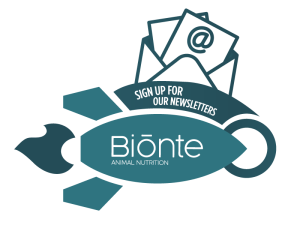Over the years, it has been observed an increased attention and care for pet’s health and welfare due to the strong nexus between pet and humans.
Likewise, nowadays the concern for the diet of our pets significantly rises, not only for the great availability of different food varieties, but also for the knowledge of the different nutritional needs. Currently, food industry for pets offers a wide variety of food products.
It should be noted that the terminology of “pet food” covers commercially available feedstuffs that are intended for pet consumption, which are normally specie-specific, such as cats and dogs food. However, the general pet food industry also takes effort in the production of food for other species, such as poultry, fish, reptiles and rodents (Miller, 1996; Boermans y Leung, 2007).
Depending on the processing methods applied, the selected ingredients and the humidity content in pet food, the classification can be categorized in general terms as dry type, semi-wet type and wet type (Case et al., 1998). Even though there is a wide range of pet food in the market, the dominant category is the dry feedstuffs.
One of the most common ingredients in dry feedstuffs is cereals, vectors of harmful mycotoxins that imply a risk for pet health.
Nutritional needs and risks in dogs and cats: a differential factor to be considered
To note, it is convenient to know that not all pets present the same nutritional needs.
For instance, dogs are omnivores and cats are carnivores. Thereby, each food must have an adequate composition and nutritional value. The cited difference between pets also implies different requirements of nutrients in their diets. As an example, cats use proteins as a main source of energy. Thus, feline food should contain more proteins in comparison with canine food.
The principal clinical symptoms that display in cats and dogs when are intoxicated by mycotoxins present in their food are: vomiting, diarrhea, convulsions, abdominal pain, polydipsia, polyuria, ascites, anorexia and development of chronic liver damage.
The Challenge
It is worth mentioning that the contamination by mycotoxins in farming ingredients used in the process of pet food production represents a high risk for pet’s health. Cereals and their sub-products contaminated by mycotoxins are commonly used in the production of pet food and these ingredients have been implicated in outbreaks of mycotoxicosis in pets in several countries (Boermans y Leung, 2007; Arnot et al., 2012; Scudamore et al., 1997).
With the aim of addressing this challenge, it is necessary to identify and quantify the presence of mycotoxins in the ingredients which will be used to produce pet food. Thus, the use of precise methodologies that permit to determine which mycotoxins are present, as well as their concentrations, is essential.
Similarly, it is of particular importance not only the identification and quantification of the results but also the interpretation of themselves in order to evaluate their criticalness. Consequently, work with specific products (anti-mycotoxins solutions for pet) and the recommendation of experts are necessary to fight against one of the main concerns among food pet producers.
Conclusion
To date, there are only few available research studies that address mycotoxin toxicity in domestic cats and dogs’ health, which are the most popular pets worldwide. Thereby, the veterinary knowledge in the potential range of toxic effects is still limited, although it was registered and described their harmful effects on health (Boermans & Leung 2007; Bryden 2012).
Nevertheless, the general conclusion is that the presence of mycotoxins in lower levels compared to them recommended by the UE regulations does not erase the risk, and consequently, caution is suggested because the long-term daily intake of mycotoxins, even in low doses, may gradually harm pet’s health.
The addition of anti-mycotoxins solutions in pet food is a promising effective solution to mitigate mycotoxins-related risks.



